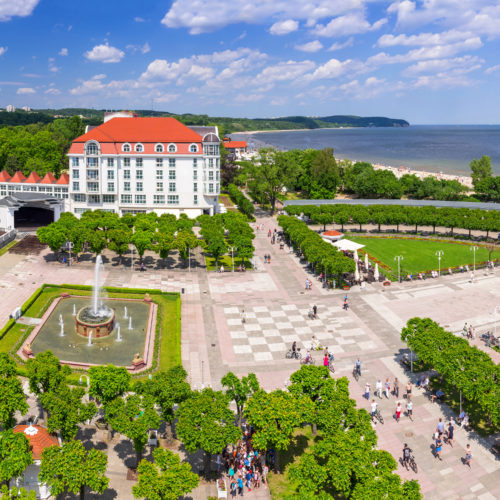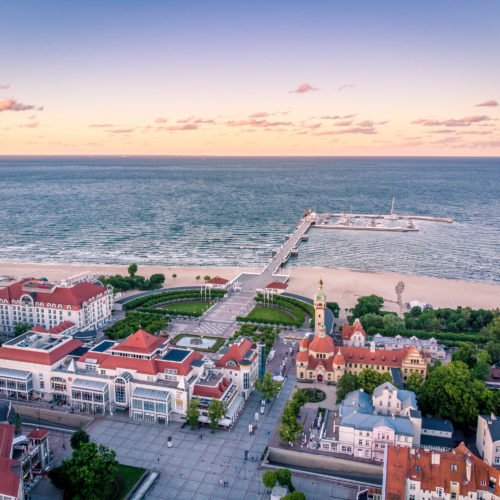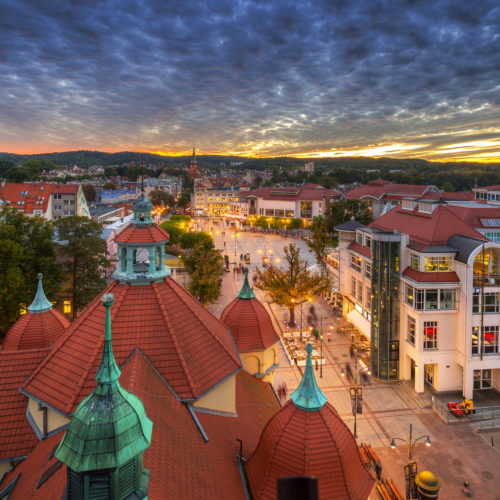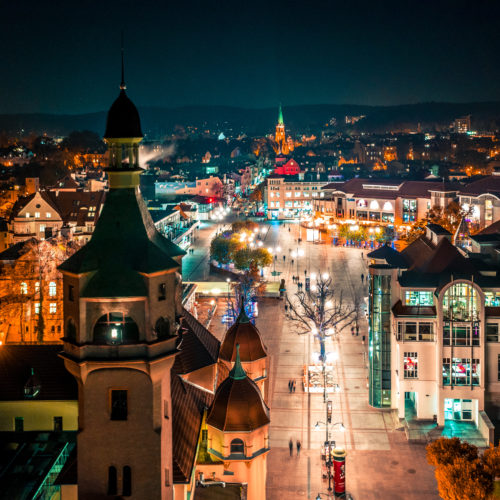
About Sopot
|
The name was first recorded in 1283 as ‘Sopoth’ in the land grant act under which Mestwin I, Duke of Pomerania, gave the fishing village to the Cistercian abbey in Oliwa. However, it was only in 1808, when dr Jean Georg Haffner, a former medic of the French army, came to Sopot with general Jean Rapp, that the actual history of the town begun. The army left Sopot but Haffner decided to settle there, moved to Gdansk, and started a family. In 1823, he built a professional bath complex in Sopot. In the following years, more facilities were erected: a bathhouse, a spa, cloakrooms, a waterfront park, walking grounds, and the first wooden pier. In 1870, the resort saw the opening of its first rail line, which added to the popularity of the area among tourists and more and more people were planning to settle there. The resort was developing further and several new facilities were built (the modern second spa and the Łazienki Północne/Południowe facilities), the pier was extended, several new streets and Sopot gas works were built, as well as the zoning scheme for the town was drawn up. In 1890s, tennis courts and a horse-racing track were built. In 1901, Sopot was granted city rights, which spurred further rapid growth in the following years. More facilities were built: a post office, a fire station, schools. With the outbreak of the WWI, the city’s growth collapsed. After the war, Sopot became a part of the Free City of Gdansk. In the period from 1920 to 1939, Sopot was known in Europe as ‘a Baltic jewel, ‘the Riviera of the North’, and ‘Monte Carlo of the North’. In the mid 1920s, Sopot had the population of about 30 000, mostly of German descent. There was a Polish minority of about 3 000 and a vibrant Jewish community. |
When WWII broke out in 1939, most of the local Poles were killed or imprisoned in camps. The Jewish community virtually disappeared. After the war, Sopot was incorporated into Poland. The former inhabitants were mostly gone. The remaining few, including the pre-war Polish community, and the settlers from Warsaw and the territories of Poland annexed by the Soviet Union formed the new population of Sopot. Today, Sopot is one of the most charming Polish cities and one of the most popular Baltic resorts. More information: https://visit.sopot.pl/en/. |








